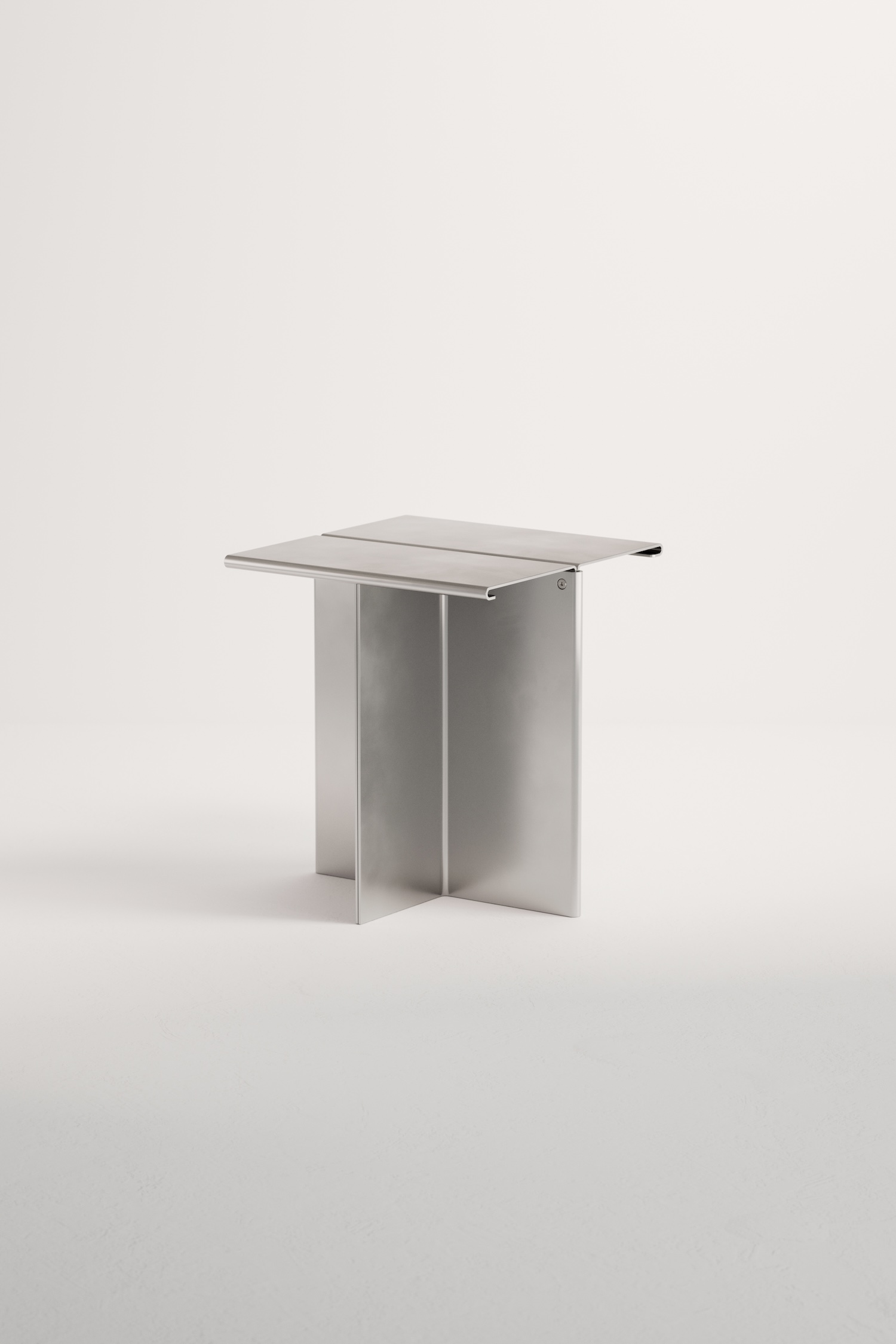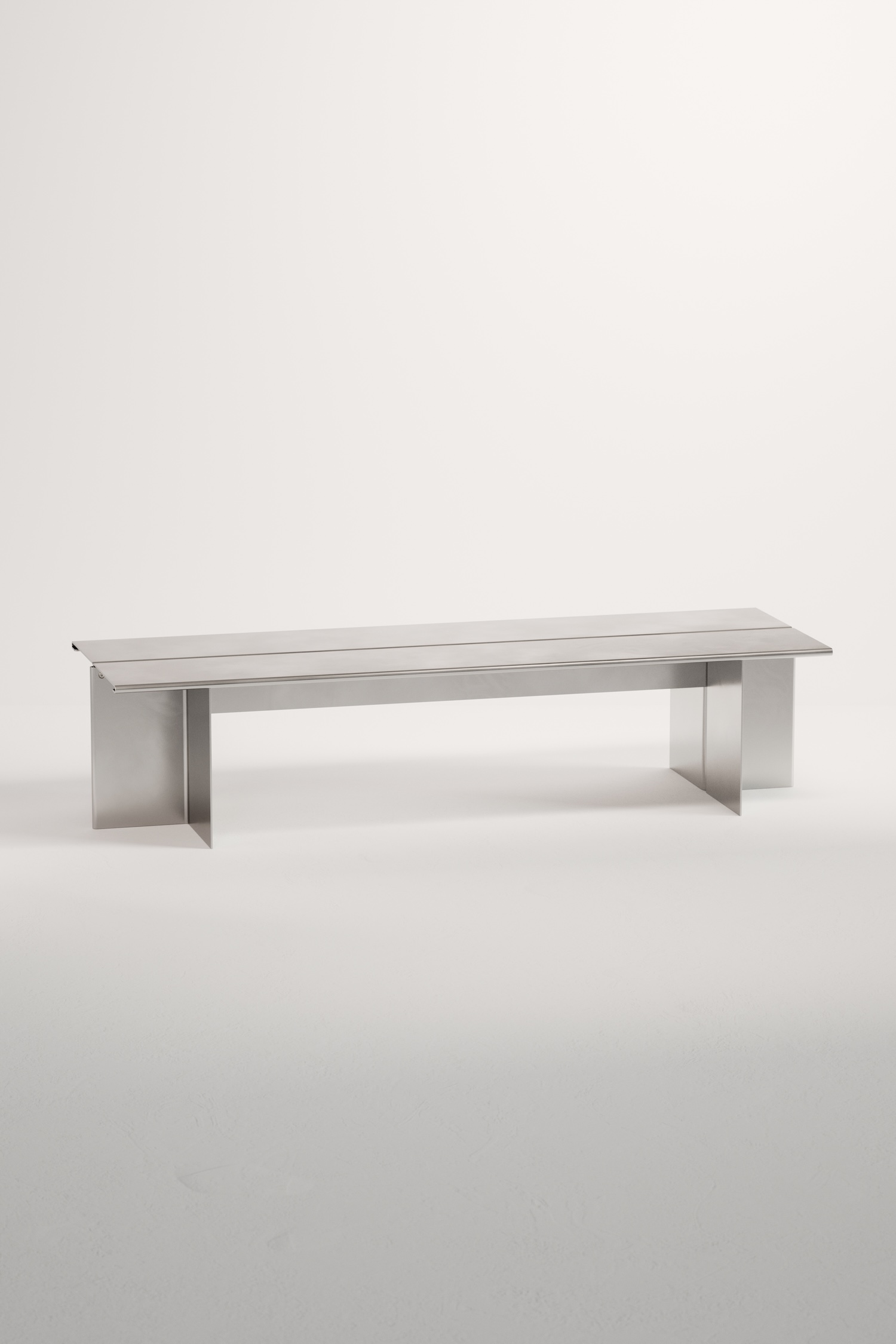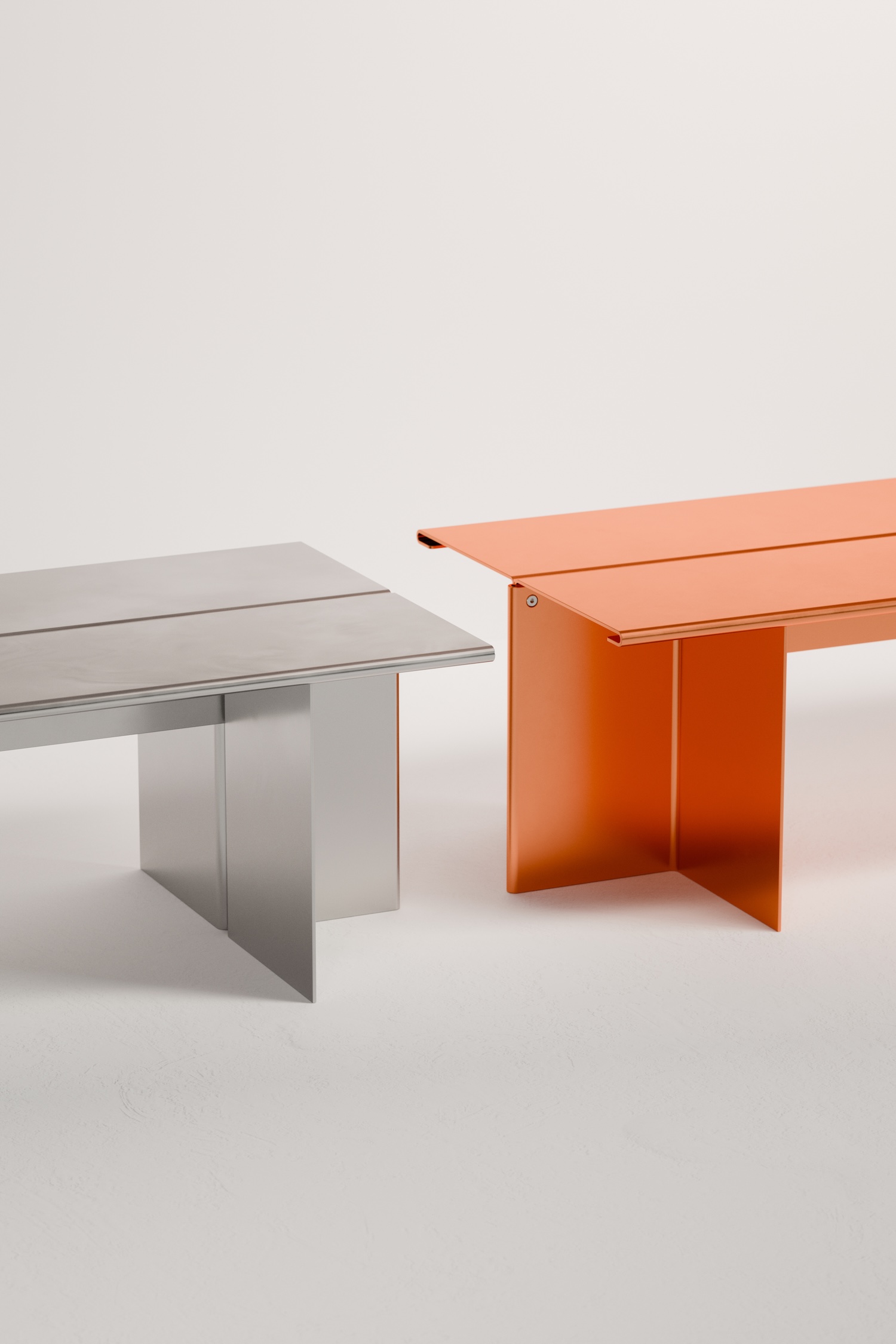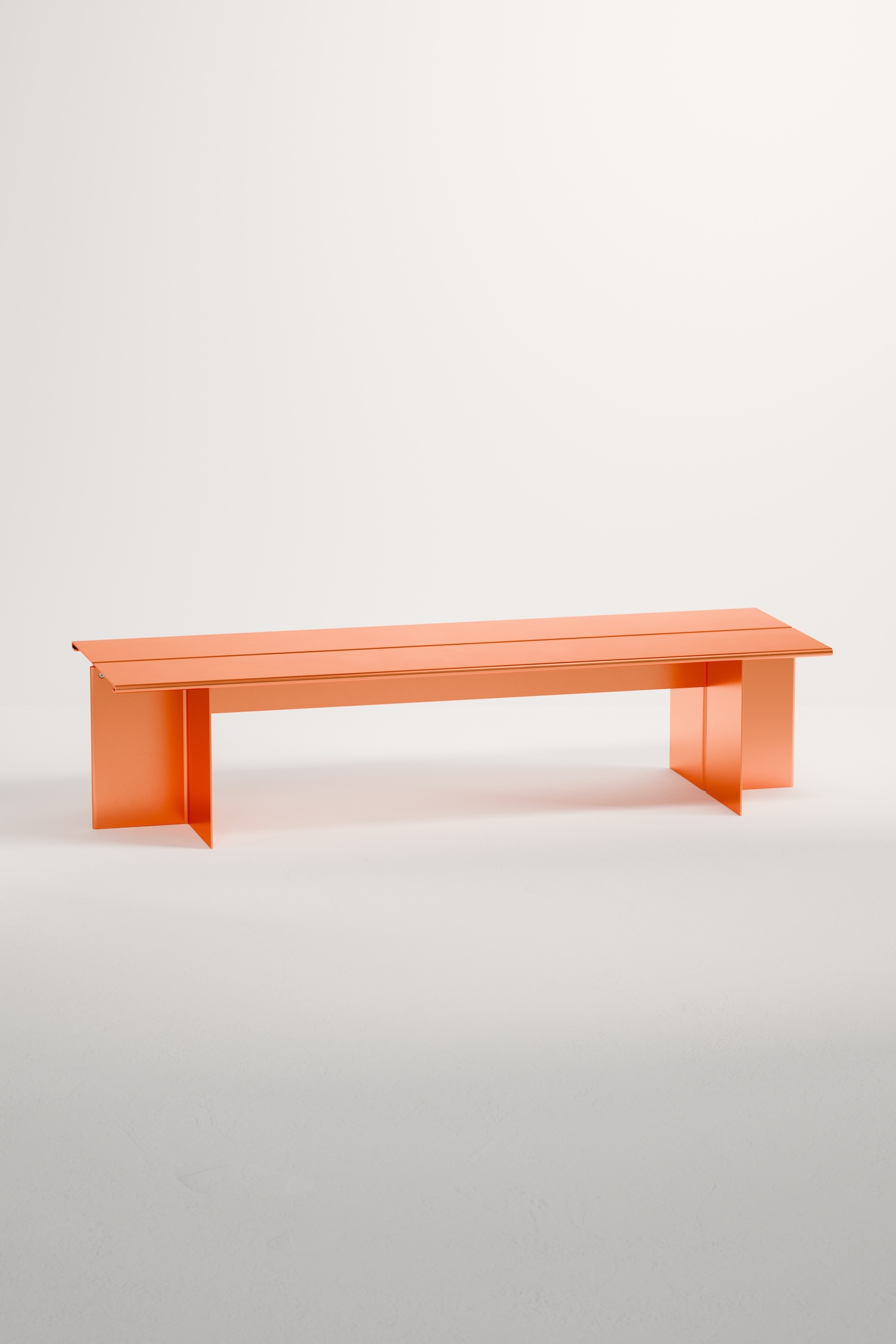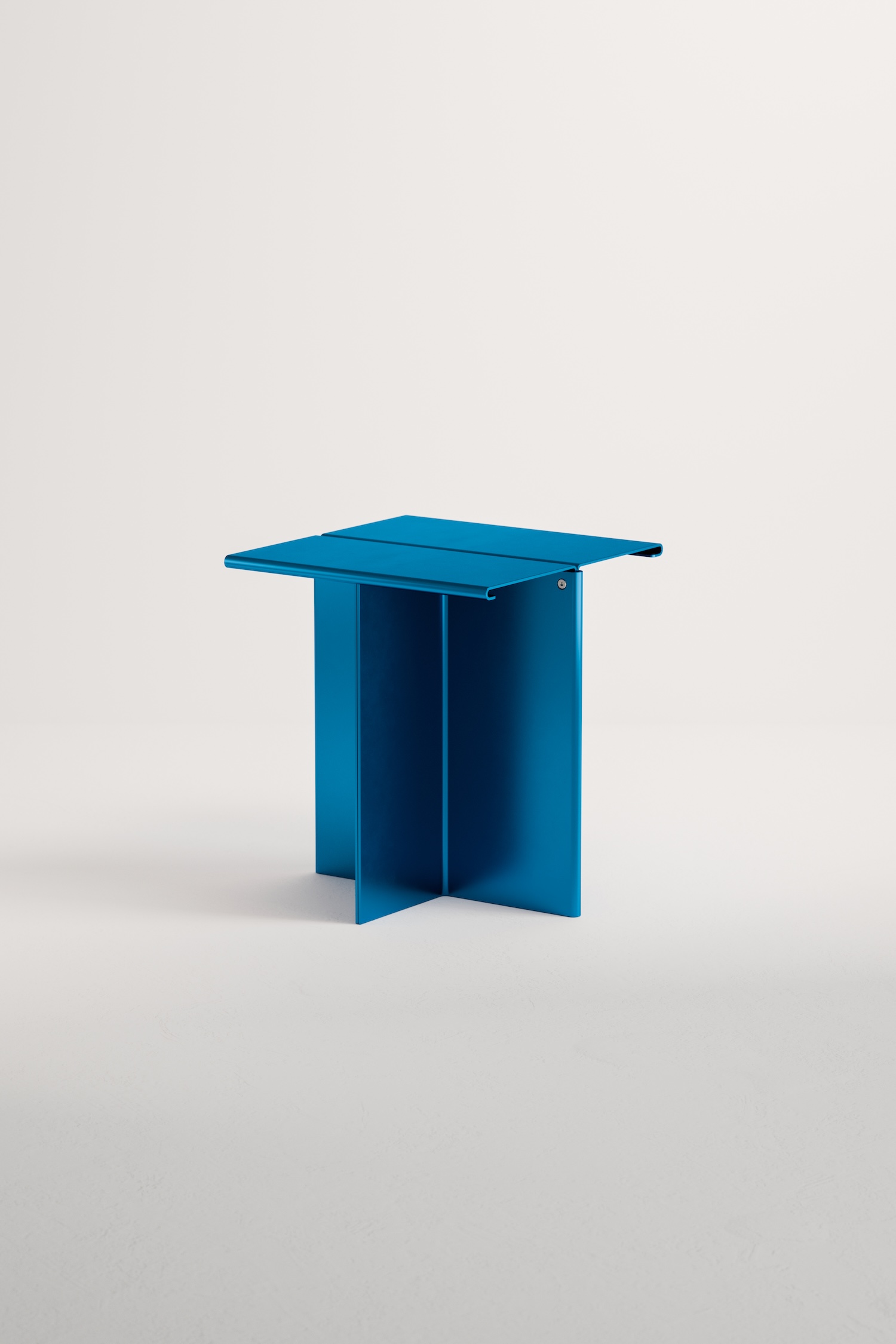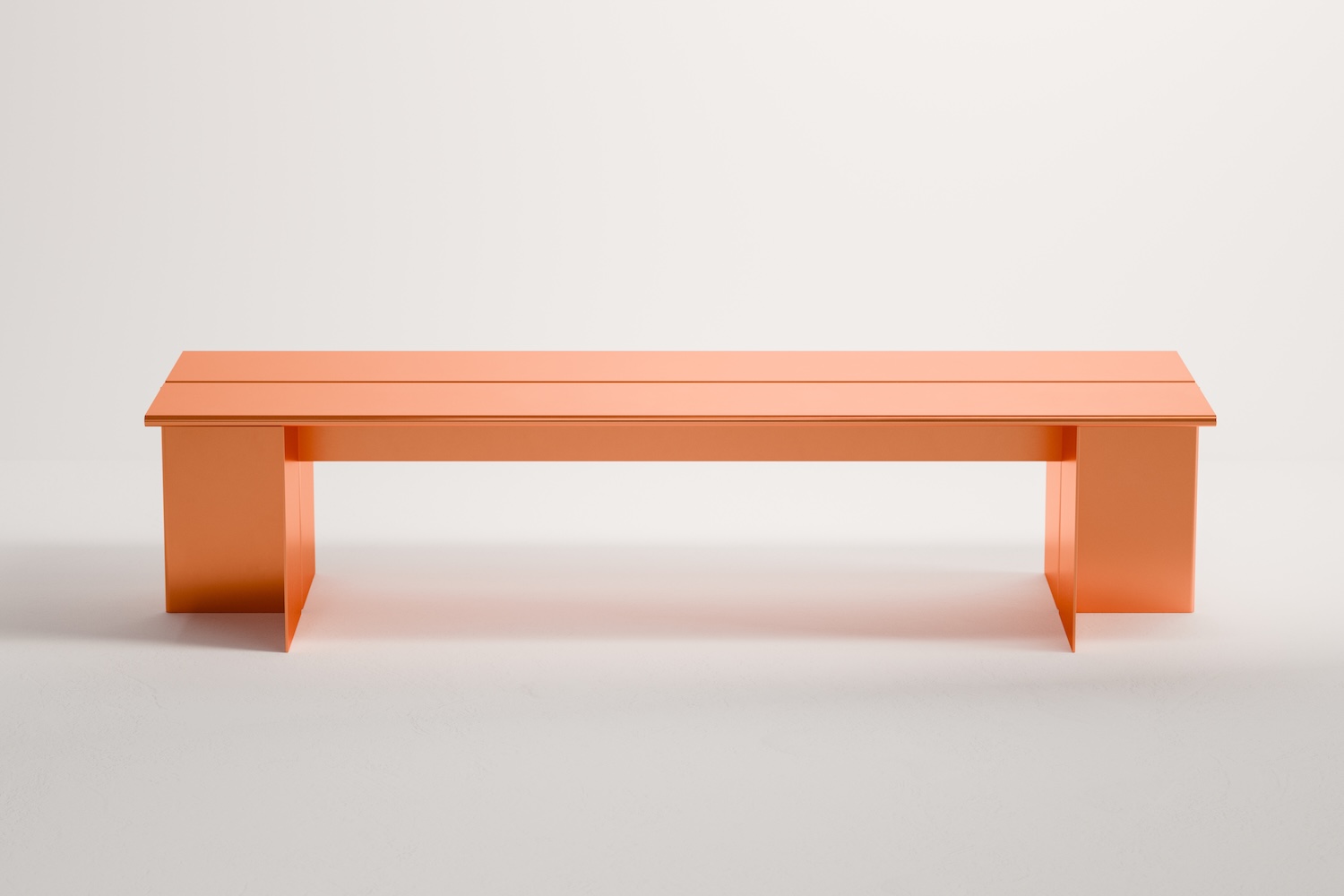Seam is a minimalist furniture created by Vancouver-based designer Nathan Martell. The gentle curve of a hemmed edge invites your touch – a surprising gesture from aluminum, a material typically associated with industrial coldness. This tactile moment exemplifies the thoughtful contradiction at the heart of Canadian designer Nathan Martell’s “Seam” collection of occasional tables. Here, what would typically be concealed – the joinery – becomes the defining feature, transforming what could be purely utilitarian furniture into objects of contemplation.
“Joinery in metal furniture is often kept out of sight and rarely celebrated, with welding commonly being hidden, or ground away entirely to create the illusion of a singular object,” Martell explains. “With Seam, I set out to explore the notion of joinery in sheet metal in the way one does with woodworking. I wanted to highlight the way the pieces come together, and have the form express both the structure and the underlying logic of its assembly.”
The collection – comprising a side table, a square coffee table, and a linear table that doubles as a bench – reveals its constructional honesty through a careful choreography of 90-degree bends and rolled edges. Each piece emerges from just 4mm aluminum sheet, transformed through precise mechanical assemblies rather than heat-based joining methods. The tables consist of two pairs of folded, interlocking components secured with binding screws, creating a visual rhythm of connection points that become decorative elements in their own right.
This approach places Martell in conversation with a rich lineage of designers who have celebrated constructional transparency, from Jean Prouvé’s exposed fasteners to Donald Judd’s methodical clarity. Yet where Prouvé’s work often retained an industrial rawness, Martell softens his edges – literally – through rolled hemming that offsets “the visual and physical harshness commonly associated with sheet metal furniture.”

